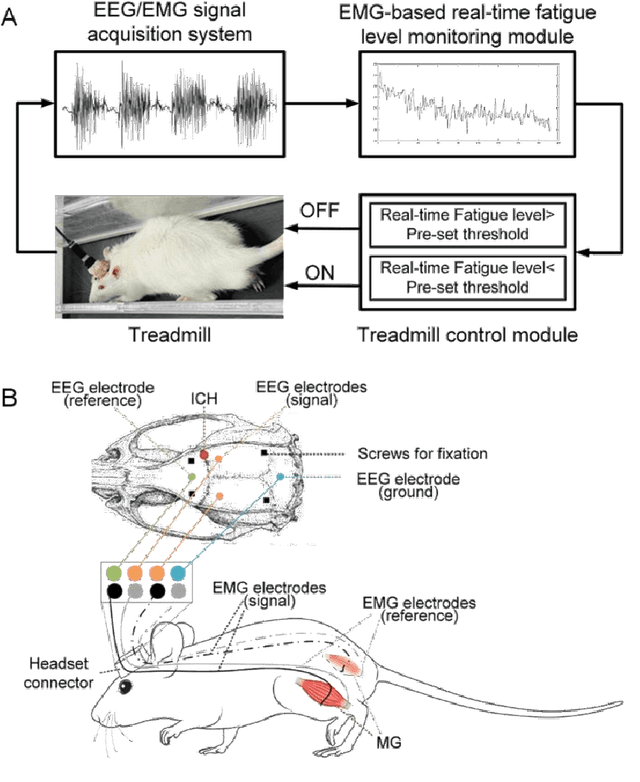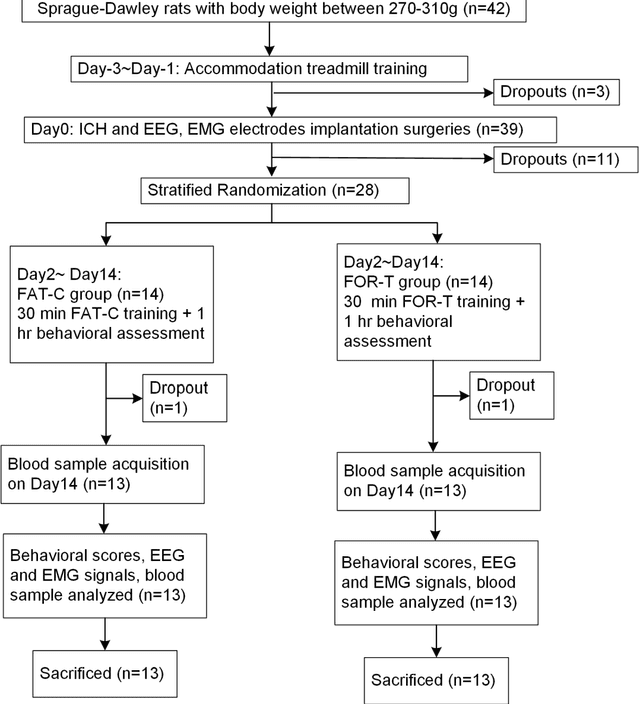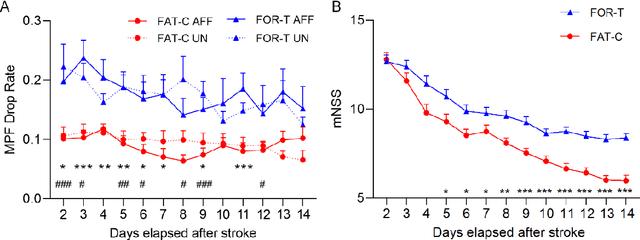Mohamad Sawan
CenBRAIN Neurotech Center of Excellence, School of Engineering, Westlake University, China
Neuro-MoBRE: Exploring Multi-subject Multi-task Intracranial Decoding via Explicit Heterogeneity Resolving
Aug 06, 2025Abstract:Neurophysiological decoding, fundamental to advancing brain-computer interface (BCI) technologies, has significantly benefited from recent advances in deep learning. However, existing decoding approaches largely remain constrained to single-task scenarios and individual subjects, limiting their broader applicability and generalizability. Efforts towards creating large-scale neurophysiological foundation models have shown promise, but continue to struggle with significant challenges due to pervasive data heterogeneity across subjects and decoding tasks. Simply increasing model parameters and dataset size without explicitly addressing this heterogeneity fails to replicate the scaling successes seen in natural language processing. Here, we introduce the Neural Mixture of Brain Regional Experts (Neuro-MoBRE), a general-purpose decoding framework explicitly designed to manage the ubiquitous data heterogeneity in neurophysiological modeling. Neuro-MoBRE incorporates a brain-regional-temporal embedding mechanism combined with a mixture-of-experts approach, assigning neural signals from distinct brain regions to specialized regional experts on a unified embedding basis, thus explicitly resolving both structural and functional heterogeneity. Additionally, our region-masked autoencoding pre-training strategy further enhances representational consistency among subjects, complemented by a task-disentangled information aggregation method tailored to effectively handle task-specific neural variations. Evaluations conducted on intracranial recordings from 11 subjects across five diverse tasks, including complex language decoding and epileptic seizure diagnosis, demonstrate that Neuro-MoBRE surpasses prior art and exhibits robust generalization for zero-shot decoding on unseen subjects.
NeuroCLIP: A Multimodal Contrastive Learning Method for rTMS-treated Methamphetamine Addiction Analysis
Jul 27, 2025Abstract:Methamphetamine dependence poses a significant global health challenge, yet its assessment and the evaluation of treatments like repetitive transcranial magnetic stimulation (rTMS) frequently depend on subjective self-reports, which may introduce uncertainties. While objective neuroimaging modalities such as electroencephalography (EEG) and functional near-infrared spectroscopy (fNIRS) offer alternatives, their individual limitations and the reliance on conventional, often hand-crafted, feature extraction can compromise the reliability of derived biomarkers. To overcome these limitations, we propose NeuroCLIP, a novel deep learning framework integrating simultaneously recorded EEG and fNIRS data through a progressive learning strategy. This approach offers a robust and trustworthy biomarker for methamphetamine addiction. Validation experiments show that NeuroCLIP significantly improves discriminative capabilities among the methamphetamine-dependent individuals and healthy controls compared to models using either EEG or only fNIRS alone. Furthermore, the proposed framework facilitates objective, brain-based evaluation of rTMS treatment efficacy, demonstrating measurable shifts in neural patterns towards healthy control profiles after treatment. Critically, we establish the trustworthiness of the multimodal data-driven biomarker by showing its strong correlation with psychometrically validated craving scores. These findings suggest that biomarker derived from EEG-fNIRS data via NeuroCLIP offers enhanced robustness and reliability over single-modality approaches, providing a valuable tool for addiction neuroscience research and potentially improving clinical assessments.
Poststroke rehabilitative mechanisms in individualized fatigue level-controlled treadmill training -- a Rat Model Study
Feb 20, 2025



Abstract:Individualized training improved post-stroke motor function rehabilitation efficiency. However, the mechanisms of how individualized training facilitates recovery is not clear. This study explored the cortical and corticomuscular rehabilitative effects in post-stroke motor function recovery during individualized training. Sprague-Dawley rats with intracerebral hemorrhage (ICH) were randomly distributed into two groups: forced training (FOR-T, n=13) and individualized fatigue-controlled training (FAT-C, n=13) to receive training respectively from day 2 to day 14 post-stroke. The FAT-C group exhibited superior motor function recovery and less central fatigue compared to the FOR-T group. EEG PSD slope analysis demonstrated a better inter-hemispheric balance in FAT-C group compare to the FOR-T group. The dCMC analysis indicated that training-induced fatigue led to a short-term down-regulation of descending corticomuscular coherence (dCMC) and an up-regulation of ascending dCMC. In the long term, excessive fatigue hindered the recovery of descending control in the affected hemisphere. The individualized strategy of peripheral fatigue-controlled training achieved better motor function recovery, which could be attributed to the mitigation of central fatigue, optimization of inter-hemispheric balance and enhancement of descending control in the affected hemisphere.
Towards Homogeneous Lexical Tone Decoding from Heterogeneous Intracranial Recordings
Oct 13, 2024



Abstract:Recent advancements in brain-computer interfaces (BCIs) have enabled the decoding of lexical tones from intracranial recordings, offering the potential to restore the communication abilities of speech-impaired tonal language speakers. However, data heterogeneity induced by both physiological and instrumental factors poses a significant challenge for unified invasive brain tone decoding. Traditional subject-specific models, which operate under a heterogeneous decoding paradigm, fail to capture generalized neural representations and cannot effectively leverage data across subjects. To address these limitations, we introduce Homogeneity-Heterogeneity Disentangled Learning for neural Representations (H2DiLR), a novel framework that disentangles and learns both the homogeneity and heterogeneity from intracranial recordings across multiple subjects. To evaluate H2DiLR, we collected stereoelectroencephalography (sEEG) data from multiple participants reading Mandarin materials comprising 407 syllables, representing nearly all Mandarin characters. Extensive experiments demonstrate that H2DiLR, as a unified decoding paradigm, significantly outperforms the conventional heterogeneous decoding approach. Furthermore, we empirically confirm that H2DiLR effectively captures both homogeneity and heterogeneity during neural representation learning.
CIC: Circular Image Compression
Jul 18, 2024



Abstract:Learned image compression (LIC) is currently the cutting-edge method. However, the inherent difference between testing and training images of LIC results in performance degradation to some extent. Especially for out-of-sample, out-of-distribution, or out-of-domain testing images, the performance of LIC dramatically degraded. Classical LIC is a serial image compression (SIC) approach that utilizes an open-loop architecture with serial encoding and decoding units. Nevertheless, according to the theory of automatic control, a closed-loop architecture holds the potential to improve the dynamic and static performance of LIC. Therefore, a circular image compression (CIC) approach with closed-loop encoding and decoding elements is proposed to minimize the gap between testing and training images and upgrade the capability of LIC. The proposed CIC establishes a nonlinear loop equation and proves that steady-state error between reconstructed and original images is close to zero by Talor series expansion. The proposed CIC method possesses the property of Post-Training and plug-and-play which can be built on any existing advanced SIC methods. Experimental results on five public image compression datasets demonstrate that the proposed CIC outperforms five open-source state-of-the-art competing SIC algorithms in reconstruction capacity. Experimental results further show that the proposed method is suitable for out-of-sample testing images with dark backgrounds, sharp edges, high contrast, grid shapes, or complex patterns.
READS-V: Real-time Automated Detection of Epileptic Seizures from Surveillance Videos via Skeleton-based Spatiotemporal ViG
Nov 24, 2023



Abstract:An accurate and efficient epileptic seizure onset detection system can significantly benefit patients. Traditional diagnostic methods, primarily relying on electroencephalograms (EEGs), often result in cumbersome and non-portable solutions, making continuous patient monitoring challenging. The video-based seizure detection system is expected to free patients from the constraints of scalp or implanted EEG devices and enable remote monitoring in residential settings. Previous video-based methods neither enable all-day monitoring nor provide short detection latency due to insufficient resources and ineffective patient action recognition techniques. Additionally, skeleton-based action recognition approaches remain limitations in identifying subtle seizure-related actions. To address these challenges, we propose a novel skeleton-based spatiotemporal vision graph neural network (STViG) for efficient, accurate, and timely REal-time Automated Detection of epileptic Seizures from surveillance Videos (READS-V). Our experimental results indicate STViG outperforms previous state-of-the-art action recognition models on our collected patients' video data with higher accuracy (5.9% error) and lower FLOPs (0.4G). Furthermore, by integrating a decision-making rule that combines output probabilities and an accumulative function, our READS-V system achieves a 5.1 s EEG onset detection latency, a 13.1 s advance in clinical onset detection, and zero false detection rate.
CMISR: Circular Medical Image Super-Resolution
Aug 15, 2023Abstract:Classical methods of medical image super-resolution (MISR) utilize open-loop architecture with implicit under-resolution (UR) unit and explicit super-resolution (SR) unit. The UR unit can always be given, assumed, or estimated, while the SR unit is elaborately designed according to various SR algorithms. The closed-loop feedback mechanism is widely employed in current MISR approaches and can efficiently improve their performance. The feedback mechanism may be divided into two categories: local and global feedback. Therefore, this paper proposes a global feedback-based closed-cycle framework, circular MISR (CMISR), with unambiguous UR and SR elements. Mathematical model and closed-loop equation of CMISR are built. Mathematical proof with Taylor-series approximation indicates that CMISR has zero recovery error in steady-state. In addition, CMISR holds plug-and-play characteristic which can be established on any existing MISR algorithms. Five CMISR algorithms are respectively proposed based on the state-of-the-art open-loop MISR algorithms. Experimental results with three scale factors and on three open medical image datasets show that CMISR is superior to MISR in reconstruction performance and is particularly suited to medical images with strong edges or intense contrast.
A 137.5 TOPS/W SRAM Compute-in-Memory Macro with 9-b Memory Cell-Embedded ADCs and Signal Margin Enhancement Techniques for AI Edge Applications
Jul 19, 2023Abstract:In this paper, we propose a high-precision SRAM-based CIM macro that can perform 4x4-bit MAC operations and yield 9-bit signed output. The inherent discharge branches of SRAM cells are utilized to apply time-modulated MAC and 9-bit ADC readout operations on two bit-line capacitors. The same principle is used for both MAC and A-to-D conversion ensuring high linearity and thus supporting large number of analog MAC accumulations. The memory cell-embedded ADC eliminates the use of separate ADCs and enhances energy and area efficiency. Additionally, two signal margin enhancement techniques, namely the MAC-folding and boosted-clipping schemes, are proposed to further improve the CIM computation accuracy.
CSwin2SR: Circular Swin2SR for Compressed Image Super-Resolution
Jan 20, 2023Abstract:Closed-loop negative feedback mechanism is extensively utilized in automatic control systems and brings about extraordinary dynamic and static performance. In order to further improve the reconstruction capability of current methods of compressed image super-resolution, a circular Swin2SR (CSwin2SR) approach is proposed. The CSwin2SR contains a serial Swin2SR for initial super-resolution reestablishment and circular Swin2SR for enhanced super-resolution reestablishment. Simulated experimental results show that the proposed CSwin2SR dramatically outperforms the classical Swin2SR in the capacity of super-resolution recovery. On DIV2K test and valid datasets, the average increment of PSNR is greater than 1dB and the related average increment of SSIM is greater than 0.006.
Deep Learning for Short-Latency Epileptic Seizure Detection with Probabilistic Classification
Jan 04, 2023Abstract:In this manuscript, we propose a novel deep learning (DL)-based framework intended for obtaining short latency in real-time electroencephalogram-based epileptic seizure detection using multiscale 3D convolutional neural networks. We pioneer converting seizure detection task from traditional binary classification of samples from ictal and interictal periods to probabilistic classification of samples from interictal, ictal, and crossing periods. We introduce a crossing period from seizure-oriented EEG recording and propose a labelling rule using soft-label for samples from the crossing period to build a probabilistic classification task. A novel multiscale short-time Fourier transform feature extraction method and 3D convolution neural network architecture are proposed to accurately capture predictive probabilities of samples. Furthermore, we also propose rectified weighting strategy to enhance predictive probabilities, and accumulative decision-making rule to achieve short detection latency. We implement leave-one-seizure-out cross validation on two prevalent datasets -- CHB-MIT scalp EEG dataset and SWEC-ETHZ intracranial EEG dataset. Eventually, the proposed algorithm achieved 94 out of 99 seizures detected during the crossing period, averaged 14.84% rectified predictive ictal probability (RPIP) errors of crossing samples, 2.3 s detection latency, 0.32/h false detection rate on CHB-MIT dataset, meanwhile 84 out of 89 detected seizures, 16.17% RPIP errors, 4.7 s detection latency, and 0.75/h FDR are achieved on SWEC-ETHZ dataset. The obtained detection latencies are at least 50% faster than state-of-the-art results reported in previous studies.
 Add to Chrome
Add to Chrome Add to Firefox
Add to Firefox Add to Edge
Add to Edge